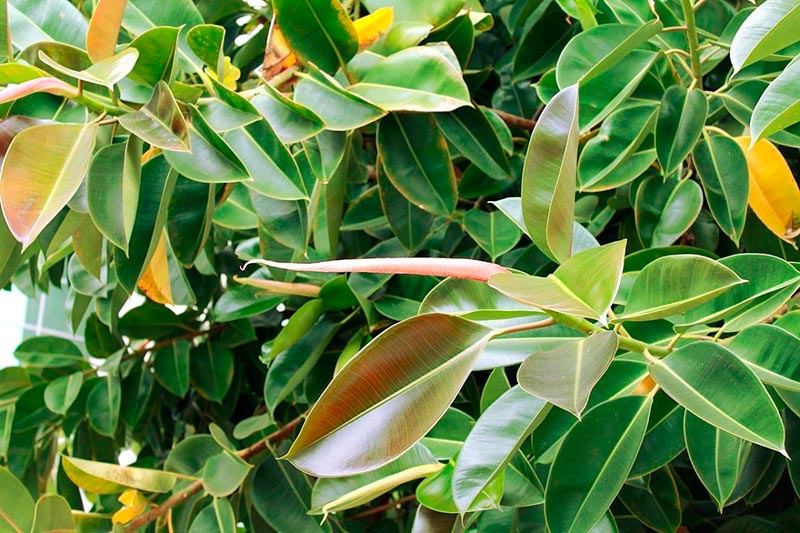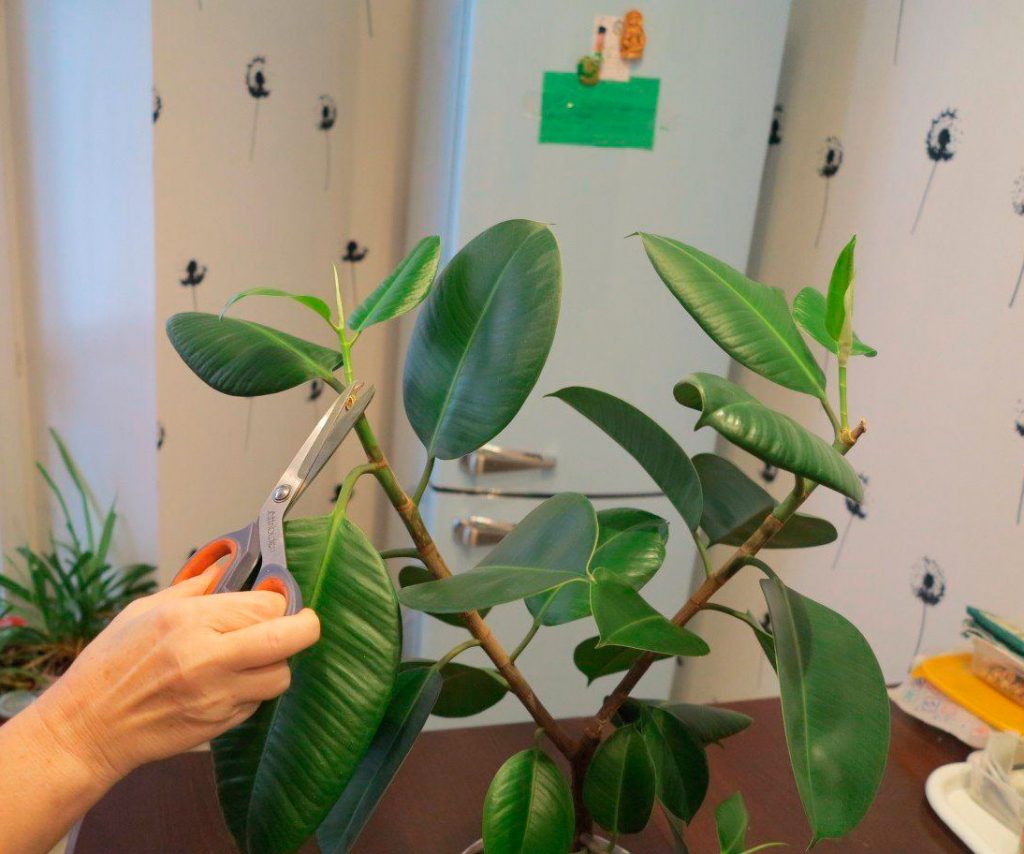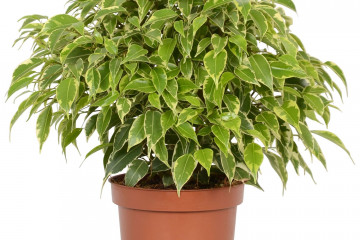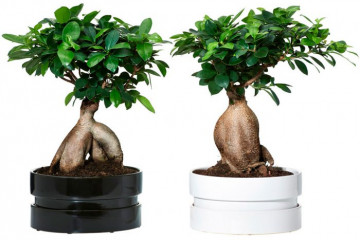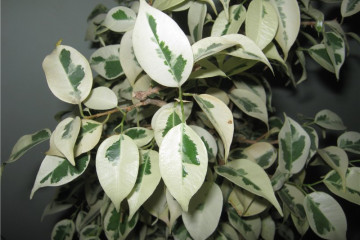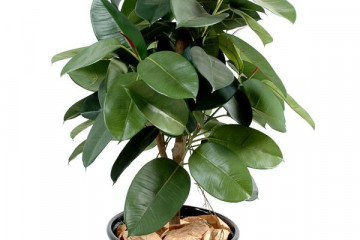Ficus Tineke - growing and caring for a flower
Content:
Ficus is especially popular among domestic plants. Signs indicate that the flower brings peace and well-being to the house. Such a plant is born mainly for decorative properties. In addition, ficus is easy to propagate, and even a beginner can take care of it.
What does a flower look like, which family it belongs to
The ficus of this species belongs to the rubber-bearing family, it can grow quite tall. In natural conditions, the plant is found in India and Indonesia. The shrub has large oval leaves. In natural conditions, the length of the leaf varies from 20 to 30 cm. The color of the foliage is bright green with a beautiful white border. Some species have diagonal stripes.
Tineke ficus care at home
It is not difficult to care for a ficus, but if you ignore the rules, you can get an ugly faded house plant.
Temperature
Ficus does not like the cold, since the climate in his homeland is very warm. The temperature in winter should not be lower than 5 degrees Celsius. In such cold weather, the foliage will take on a black tint, and the bush will die. The high temperature is also often harmful to the flower. The optimal mode is + 18 ... +25 degrees.
Lighting
The lighting for the flower does not play a special role. If the rubber-bearing ficus Tineke grows in the shade, then its foliage loses its variegation and becomes just green. With a small amount of light, the plant will quickly shed its foliage and enter a state of sleep. It is better to place Ficus tineke closer to the window, and in the summer season to take it out to the balcony or garden.
Watering
The plant tolerates wet soil well, the earth should not dry out. In this case, it is important not to flood the flower so that the root system does not suffer. The irrigation regime should completely depend on the climatic zone. Features of flower irrigation:
- in summer, watering is done 3 times a day;
- in autumn and winter, moisture is reduced to several times a week;
- in the spring, active growth of ficus begins, so watering is carried out as needed.
Spraying
This procedure is very beneficial for the flower. During a period of severe drought or at the time when the heating is turned on, it is simply necessary to regularly spray the plant. The procedure can be performed several times a week.
Humidity
Under natural conditions, ficus grows in well-humidified air, but the dryness of the apartment microclimate affects the flower negatively. With insufficient moisture, the foliage of the bush turns yellow and begins to fall off. This happens most often in apartments during the heating season, when the radiators start to work.
Priming
The flower prefers loose, fertile soil. If peat soil was purchased at a flower shop, then leafy soil and sand should be added to it.
Top dressing
A complex of vitamins and minerals is essential for Tineke. The most important components of mixtures for this culture are nitrogen and magnesium.Nitrogen will accelerate the growth of foliage, and magnesium will save it from premature aging.
Pruning
The flower is famous for its wide foliage and its rapid growth. If you do not follow the shrubbery and do not cut off the upper part, then the ficus is quite capable of growing to the very ceiling. The plant is pruned for the purpose of healing once every 3 years.
How ficus Tineke reproduces
Reproduction of culture occurs in a vegetative way. There are several options:
- cuttings;
- air layering;
- rooting of the leaf.
Rooting cuttings
The stalk must be at least 15 cm long. It is cut obliquely and placed in water for rooting. The procedure can also be carried out in wet sand. After obtaining young roots, the plant is planted in a permanent place.
Air layering
The shoot is cut obliquely, and a match is inserted into it so that the stem does not overgrow. Moss is applied to the place, moistened and wrapped in foil. When the first shoots appear, you can cut off the layers and plant them in separate pots.
Rooting a leaf
This method is considered the most ineffective. The leaf can be placed in water or soil for rooting. In the best case, you will get a leaf with roots, but you should not wait for shoots.
Transfer
When there are no nutrients left in the soil of the flower, it is transplanted. Young bushes are transplanted annually. After 5 years, the plant can grow in a pot for many years. When the foliage of the ficus becomes small, this can be considered a signal for the need for a transplant.
Possible growing problems and diseases
There are many reasons for the development of Tineke Elastica ficus diseases. Failure to comply with the rules of cultivation and ignoring the elementary rules of agricultural technology leads to a variety of problems.
The flower sheds its leaves
Falling foliage may indicate an incorrect watering regime, most likely the plant did not have enough moisture.
Leaves turn pale
This is due to excess moisture. It is worth revising the irrigation regime.
The tips of the leaves dry
The tips of the leaves shrink and turn brown due to a lack of trace elements in the soil or too dry air. The situation can be corrected by applying fertilizer and regular spraying.
Pests
Often, the plant is attacked by pests such as scale insects, mealybugs and aphids. In this case, the flower must be treated with soapy water, and the insects must be collected by hand.
Signs and superstitions
It is believed that ficus brings positive energy into the house. For families in whose homes a flower grows, this promises prosperity and financial prosperity. The Slavs attributed completely different characteristics to ficus. In their opinion, the plant is associated with evil spirits and brings only misfortune to its owners.
Ficus elastica Tineke is a highly ornamental plant. The flower has a lush crown that grows very quickly. Caring for a plant at home is quite simple, but extremely necessary. Even a beginner will be able to grow this flower on their windowsill.
